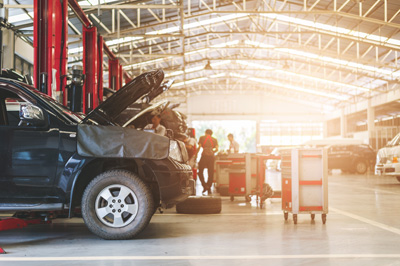The Romans Group announced its 16th annual white paper, A 2021 Profile of the Evolving U.S. and Canadian Collision Repair Marketplace, is now available.
The pinnacle year for the collision repair industry was 2019, with an all-time high total addressable market (TAM) of $38.3 billion. Repair facilities were flush with repairable vehicles and had the manpower and parts to service the demand.
The recovery years of 2021 and 2022 were and continue to be awkward and choppy, as the collision repair industry attempts to bounce back within the constructs of numerous macro industry challenges and opportunities, U.S. economic and geo-political headwinds despite the many post-pandemic recovery advances within the collision repair industry and throughout the broader interconnected auto physical damage landscape.
In 2021, despite a continued reduction in repairable claims, the industry’s TAM recovered to $38.6 billion despite fewer repairable claims, which were primarily supported by an offset increase in higher severity.
Collision Repair Industry
Our near-term future view sees a coalescing of several trends that portend industry growth with both risks and opportunities.
From the beginning of the pandemic in 2020 and continuing throughout 2022, demand for collision repair services exceeded technician capacity for most of the larger MLO consolidators in the U.S. and Canadian markets, which resulted in high levels of work-in process. We see this extending into 2023 due to the continuing labor shortage. It is not a matter of demand, but a supply side lack of labor availability.
Labor shortages and technician skill deficiencies are creating competition to acquire those who are interested in receiving training to improve their skill levels. This situation is consequently increasing technician acquisition, retention and benefit costs.
Insurance carriers have taken additional steps to increase premiums to cover their rising costs. Historically, repairers had a difficult time pursuing labor rates with insurers. Today, the collision repair industry is aggressively pursuing labor rate increases and is hopeful that insurer premium increases will allow for their labor rate increases.
Insurance carriers, which continue to account for a significant volume of claims to repairers, tend to favor MSOs that offer largely predictive and standardized outcomes.
We do see a nascent movement by several MLOs to move away from DRP relationships while opting into a predominantly OEM certification preference model.
MLO scale remains a competitive advantage.
The groundswell of support and adoption of OEM repair standards continues to emerge as the preferred norm. However, the degree of influence and control by the OEMs in directing business remains limited. There is a better near-term chance for ROI with premium and luxury brands today due to their more active involvement and adherence to program standards and processes influencing where cars are repaired.
Vehicle telematics will become a more influential factor in the future control of the claims process.
Electric vehicle sales are trending upward toward 10% of new car sales by YE 2022. We expect EV sales to increase to between 30% and 40% of sales by 2030.
Despite the expectation of the onslaught of EVs, range anxiety will need to be addressed and overcome through increasing battery range capability coupled with growing the number of charging stations nationally.
Full digitalization of the estimating process for qualified repairable claims starts with less complex repairs and eventually migrates to more complex damaged vehicles. The journey starts with photos and evolves to telematics, reliance on artificial intelligence coupled with insurer-driven rules and integration of supplier network connections. This throughput connected process will automatically initiate and populate the line-item detail necessary for predictive and actionable estimates.
Continued evolution of business segmentation strategies will have the largest consolidators marketing their “one national shop model/platform” to insurers, boosting a large marketplace network of available collision repair locations throughout the U.S.
This one-national-shop model is further segmented within markets by various clusters of collision repair locations that can provide a broad range of segmented capabilities able to satisfy a wide range of repair types including glass installation, express same or next-day service, non-drivable/total-loss processing and disposition, OEM standards and luxury model certification, advanced material repair, mechanical repair, diagnostic services including pre- and post-repair scanning and calibration, and partnering and operating dealership collision repair centers.










Abby Andrews